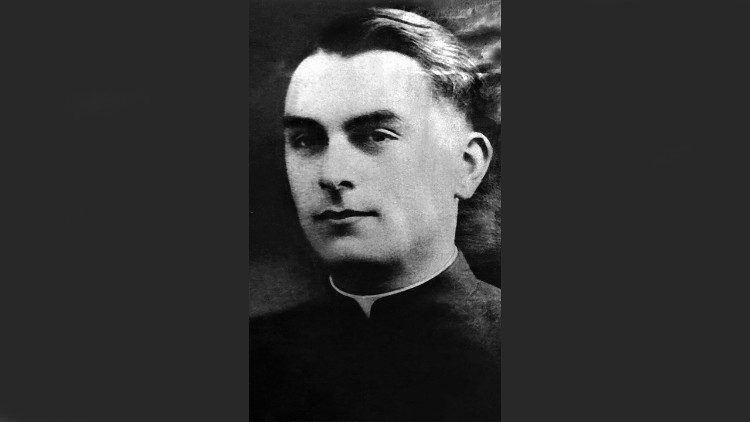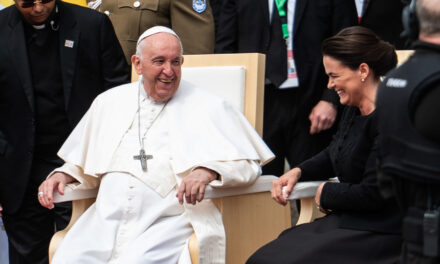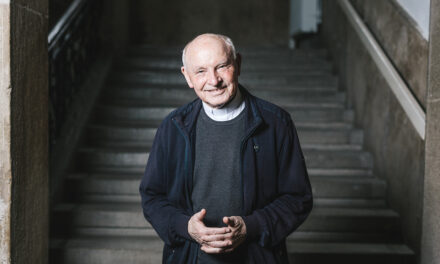On Friday, Pope Francis received Cardinal Marcello Semeraro, Prefect of the Dicastery for the Affairs of the Saints, and the Pope authorized the publication of six decrees. One of the decrees recognizes the martyrdom of the servant of God Péter Pál Orosz, priest of the Eparchy of Munkács. The Greek Catholic priest was born on July 14, 1917 in Biri, Hungary. He was killed for his hatred of faith on August 28, 1953 in Alsókaraszlo, Transcarpathia (Ukraine).
The Greek Catholic priest became a victim of church persecution in the Soviet Union in 1953. According to tradition (not officially registered, documents do not prove it), Tódo Romzsa consecrated him as a bishop secretly in Transcarpathia. Of the six decrees, one recognizes martyrdom, and the others recognize heroic virtues.
The Transcarpathian pastor lived his life in the spirit of commitment to the needy and firm faith. He was murdered at the age of 36.
A few hours after the secretly presented divine liturgy, a pistol shot hit Father Péter Pál Orosz in the chin, penetrating his neck and shoulder. On August 28, 1953, the Soviet communists put an end to the life of a priest belonging to the Greek Catholic Diocese of Munkacs in Alsókaraszló (Siltse) in Transcarpathia, which he lived in the spirit of devotion to the weakest and firm faith. The Pope acknowledged the martyrdom of Father Orosz during the audience on Friday morning, during which he received the Prefect of the Dicastery for the Affairs of the Saints, Cardinal Marcello Semeraro. It will soon be inaugurated…
...With the violent annexation in 1944, the persecution of the Greek Catholic Church began. Tódor Romzsa, who was later beatified, appointed Father Orosz to the parish of Bilkébe in the district of Ilosva in 1946. He was already under pressure to convert to the Russian Orthodox Church. In 1948, this pressure intensified, but he resisted and remained loyal to the Pope. Pastoral activities were banned in 1949 and all Greek-Catholic churches were closed. The Münkacs eparchy was also abolished.
Father Oroz had to hide, the internal affairs authorities watched and investigated him. When the Greek-Catholic Church was banned in 1949 and respected members of society were systematically eliminated, the servant of God continued to carry out his ministry in secret. In 1953, an arrest warrant was issued against him. He tried to escape, but on August 27 a policeman stopped him at the train station in Alsókaraszló and arrested him. He set off on foot, but at a roadside cross near Alsókaraszló, Péter Orosz declared that he could not go any further. Then the policeman threatened him with death, and after Father Orosz knelt down to pray the rosary, he shot him. After the assassination, he was immediately considered a martyr. The remains of the priest and the place where he was buried remained hidden until the collapse of the Soviet Union.
The remains of Father Péter Pál Orosz were buried in concrete in the garage of the police chief in Ilosva. "The delayed funeral according to the Greek Catholic ceremony finally took place on August 28, 1992 in Bilké. The grateful faithful built a chapel in honor of the martyred bishop, in which his ashes were placed under the glass plate of the altar table in front of the Holy Family image. Pál Magyar, parish priest of Bilke, wrote a nine-day prayer to glorify the martyred bishop," Erzsébet Fodorné Orosz, niece of Father , wrote in her article
His memory is deeply etched in the memory of the faithful, and he still lives vividly today together with the "fama signorum", that is, with the conviction that he effectively intercedes with God.
The beatification process of Father Péter Pál Orosz began Milán Sasik , the bishop of the Greek Catholic Diocese of Münkacsi, János Szőke and László Puskás
Source and cover image: Vatican News












